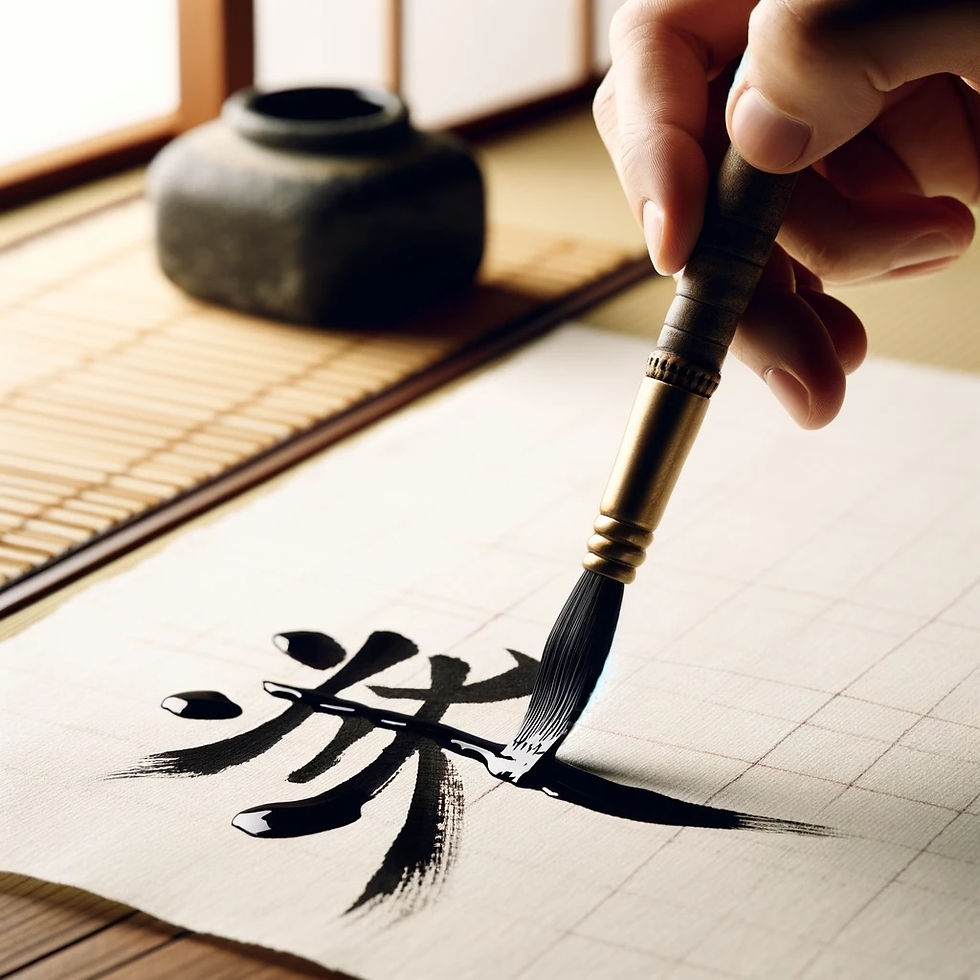Discover Goshuin: Sacred Stamps of Japanese Temples
- Marco

- Jun 5, 2024
- 3 min read
Updated: Nov 18, 2024
In the serene and sacred spaces of Japan's temples and shrines, visitors often encounter the unique and beautiful tradition of collecting goshuin. These temple and shrine stamps, collected in special books called goshuin-chō, are stunning works of calligraphy and art and hold deep spiritual significance. In this article, we will delve into the world of goshuin, exploring what they are, their cultural importance, and how you can start your own collection of goshuin Japanese stamps.
What is a Goshuin?
A goshuin (御朱印) is a seal or stamp given to visitors at Buddhist temples and Shinto shrines in Japan. Each goshuin is a piece of art, typically featuring the temple or shrine’s name, the date of the visit, and a unique design that may include calligraphy, symbols, and sometimes even images of deities or sacred objects.
The History and Significance of Goshuin
Originally, goshuin were given to pilgrims as proof of their visit and a record of their devotion. These stamps were considered blessings, believed to bring good fortune and spiritual merit. Over time, the tradition evolved, and collecting goshuin became a popular practice among not only pilgrims but also tourists and locals seeking to connect with Japan’s spiritual heritage.
Goshuin-chō: The Sacred Stamp Books
To collect goshuin, one needs a goshuin-chō (御朱印帳), a special book designed for this purpose. These books vary in size, design, and price, often featuring beautiful covers adorned with traditional Japanese patterns, religious symbols, or scenic illustrations. Goshuin-chō are available for purchase at temples, shrines, and specialty stores.
How to Collect Goshuin
Collecting goshuin is a simple but respectful process. Here are the steps to follow:
Purchase a Goshuin-chō:
Start by acquiring a goshuin-chō. These books can be found at many temples, shrines, and souvenir shops.
Visit a Temple or Shrine:
When you visit a temple or shrine, look for signs or ask if goshuin are available. Not all religious sites offer them, but many do.
Requesting a Goshuin:
Approach the designated area for goshuin, often marked by a sign or a small booth. Politely request a goshuin by handing over your goshuin-chō. A small donation (typically around 300-500 yen) is usually required.
Receiving the Goshuin:
A monk, priest, or staff member will inscribe the goshuin directly into your book, creating a unique and personalized stamp. The process involves careful brushwork and sometimes the application of red or black ink stamps.
Express Gratitude:
After receiving your goshuin, thank the person who inscribed it. It's a gesture of appreciation for the time and effort taken to create this beautiful piece of art.
The Cultural and Personal Value of Goshuin
For many, collecting goshuin is more than just a hobby. It’s a way to engage with Japan’s spiritual traditions, appreciate its artistic heritage, and create a personal record of their spiritual journey. Each goshuin is a tangible reminder of a visit to a sacred place, encapsulating memories and moments of reflection.
Tips for Collecting Goshuin
Respect the Sacred Spaces: Always be mindful of the sacred nature of temples and shrines. Follow local customs and show respect during your visit.
Be Patient: Creating a goshuin takes time and skill. Be patient and allow the person inscribing it to work at their own pace.
Explore Different Sites: Each temple and shrine offers a unique goshuin. Visit a variety of sites to build a diverse and rich collection.
Learn the Stories: Take time to learn about the history and significance of the temples and shrines you visit. It adds depth to your collection and enhances your experience.
Goshuin Japanese Stamps: Final Thoughts
Collecting goshuin is a rewarding and enriching practice, offering a unique way to connect with Japan's spiritual and cultural heritage. Whether you’re a devoted pilgrim or a curious traveller, starting a goshuin collection can become a cherished part of your journey through Japan.
So, next time you visit a Japanese temple or shrine, don’t forget to bring your goshuin-chō. Embrace the tradition, appreciate the artistry, and take home a piece of Japan’s sacred beauty.
Happy collecting!
Marco



















Comments